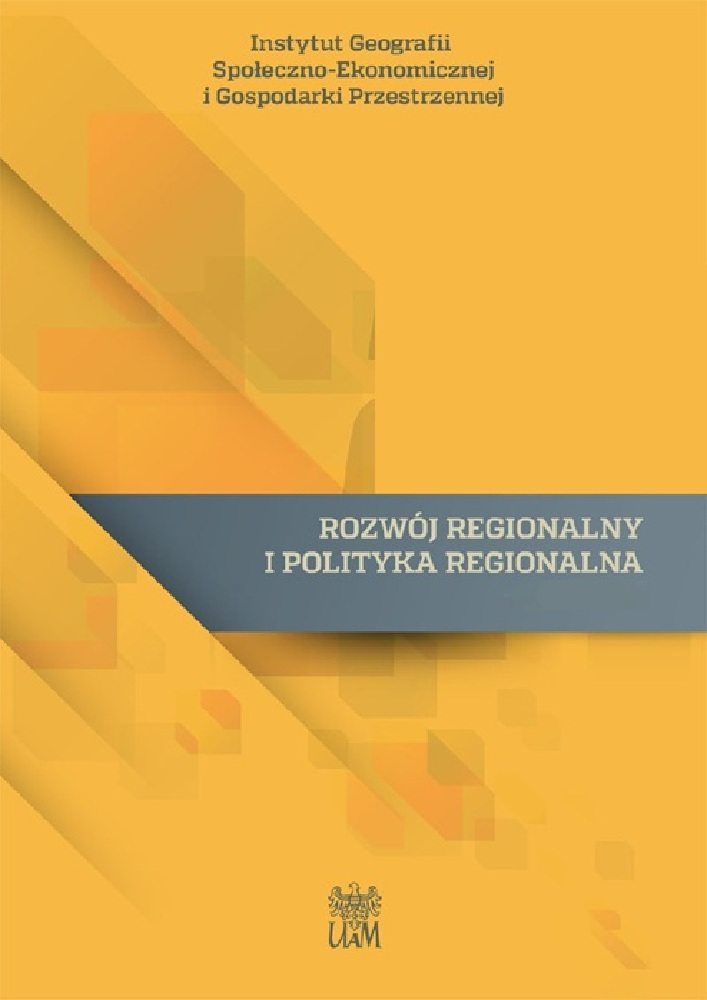Abstrakt
En effet des changements des frontières dans la première moitié du XXe siècle tout près des frontières à l’ouest et au sud de la Pologne sept villes divisées ont apparu. Dans les années 1945–1989, les contacts économiques entres les villes situées de deux côtés de la frontière ont été difficiles. En se basant sur les recherches effectuées dans les années 1990–2010 on a constaté qu’à la suite des changements politiques de la fin des années 80 et du début des années 90 dans les villes divisées ont eu lieu les modifications importantes dans la structure démographique ainsi que dans l’économie et les services. Ces villes ont commencé, entre autres, à développer les différentes fonctions complémentaires (en particulier dans le domaine du commerce et dans certains services), adressées aux habitants de l’autre côté de la frontière.Bibliografia
Kaczmarek T. 2005. Struktury terytorialno-administracyjne i ich reformy w krajach europejskich. Wydawnictwo Naukowe UAM, Poznań, 390 p.
Kulczyńska K. 2006. Tereny powojskowe – nowe funkcje starych przestrzeni miejskich (przykład Słubic). in I. Jażdżewska (dir.), Nowe przestrzenie, ich organizacja i funkcje. XIX Konwersatorium wiedzy o mieście, Wydawnictwo Uniwersytetu Łódzkiego, Łódź, pp. 141–151.
Kulczyńska K. 2010. The Gubin-Guben transborder urban complex as an arena of consumer behaviour. in Bulletin of Geography (socio-economic series), 14/2010, pp. 79-89. DOI: https://doi.org/10.2478/v10089-010-0016-z
Kulczyńska K. 2011. Nowe formy zagospodarowania przestrzeni miejskiej jako wyznacznik przemian społeczno-gospodarczych i sukcesji w miastach przygranicznych. in W. Gulczyński (dir.), Lokalne i regionalne problemy gospodarki przestrzennej. Wydawnictwo Wyższej Szkoły Biznesu w Gorzowie Wielkopolskim, Gorzów Wielkopolski, pp. 123–137.
Kulczyńska K., Matykowski R. 2008. Struktura przestrzenno-handlowa przygranicznego zespołu miejskiego Česky Těšin-Cieszyn. in D. Świątek, M. Bednarek, P. Siłka (dir.), Współczesne problemy badawcze geografii polskiej – geografia człowieka. Dokumentacja Geograficzna, 36, PAN IGiPZ i PTG, Warszawa, pp. 202–207.
Leszczycki S. 1970. Położenie geograficzne Polski. in S. Leszczycki (dir.), Zarys geografii ekonomicznej Polski. Państwowe Wydawnictwo Naukowe, Warszawa, pp. 7–22.
Lundén T. 2007. Border agglomerations In the Baltic area: obstacles and possibilities for local interaction. in Geographia Helvetica Jg. 62 2007/Heft 1, pp. 22–32. DOI: https://doi.org/10.5194/gh-62-22-2007
Mackré Q. 2009. Géopolitique de Francfort-Sur-l’Oder/Słubice, ville-doublon sur une frontière en déconstruction. in L’Espace Politique 8/2009–2, http://espacepolitique.revues.org/index1348.html (le 22 avril 2013). DOI: https://doi.org/10.4000/espacepolitique.1348
Matykowski R., Kulczyńska K., Tobolska A., Konecka-Szydłowska B. 1998. Polskie obszary przygraniczne w okresie transformacji. in J. J. Parysek i H. Rogacki (dir.), Przemiany społeczno-gospodarcze polski lat dziewięćdziesiątych. Bogucki Wydawnictwo Naukowe, Poznań, pp. 145–173.
Moraczewska A. 2008. Transformacja funkcji granic Polski. Wydawnictwo Uniwersytetu Marii Curie-Skłodowskiej, Lublin, 297 p.
Olszewicz B. 1938. Obraz Polski dzisiejszej. Wydawnictwo M. Arcta, Warszawa, 255 p.
Otremba T. 1997. Wyżyna Polska. O zachowaniu całości i niepodległości Polski. Wydawnictwo Regnum, Gdańsk, 608 p.
Sanguin A. 1983. L’architecture spatiale des frontières politiques, quelques réflections thèoretique á propos de l’exemple suisse. in Region Basiliensis, 24, pp. 1–10.
Tomala M. 2002. Zachodnia granica Polski po II wojnie światowej. Polska Fundacja Spraw Międzynarodowych, Warszawa, 278 p.
Waack Ch. 2000. Stadträume und Staatsgrenzen. Geteilte Grenzstädte des mittleren und östlichen Europa im Kontext lokaler Alltagswelten, nationaler Politik und supranationaler Anforderungen. Beiträge zur Regionalen Geographie 51, Leipzig, 236 p.
Licencja
Copyright
© 2013 IGSEiGP, Uniwersytet im. Adama Mickiewicza w Poznaniu
OPEN ACCESS
